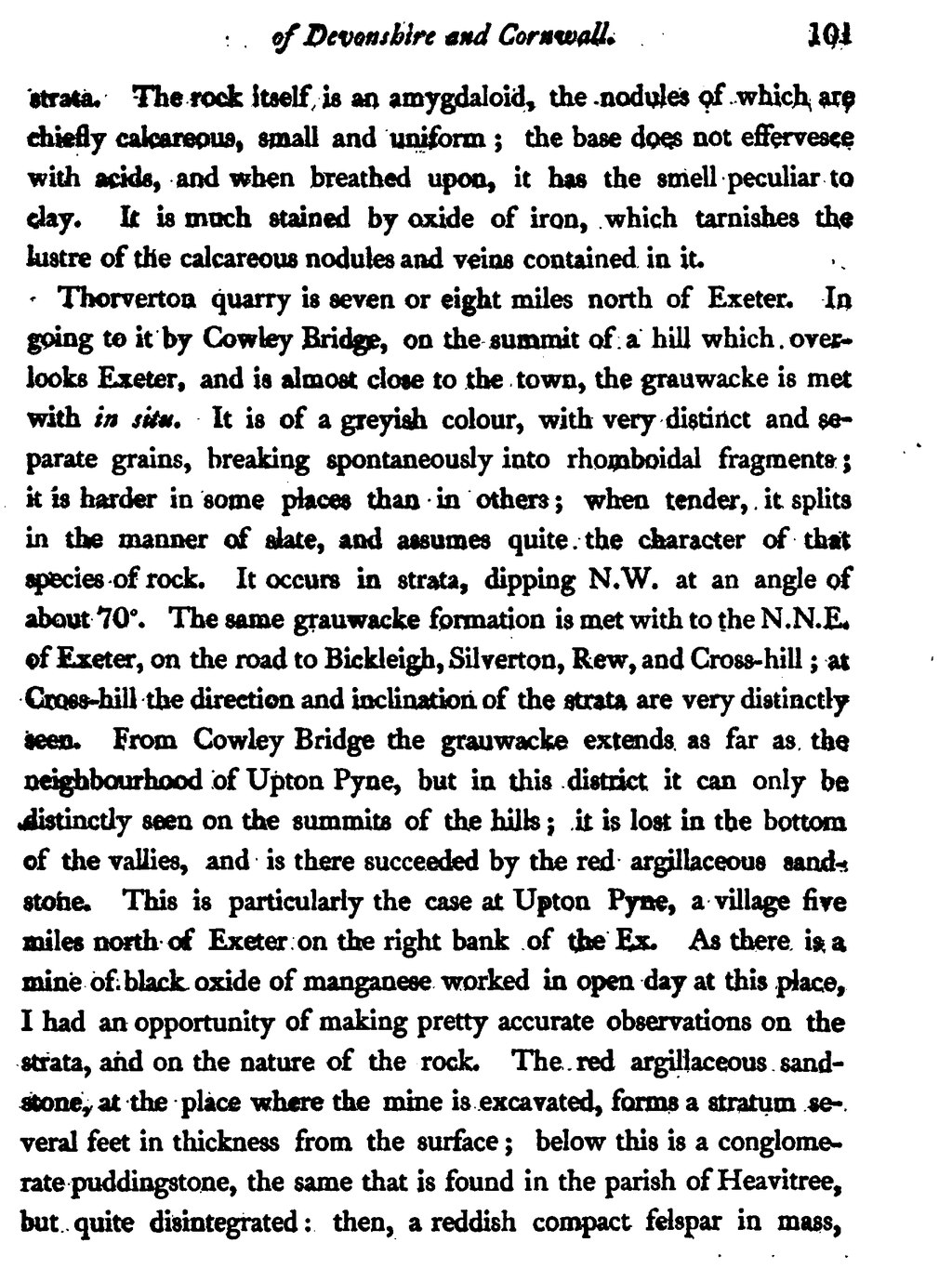strata. The rock itself is an amygdaloid, the nodules of which are chiefly calcareous, small and uniform; the base does not effervesce with acids, and when breathed upon, it has the smell peculiar to clay. It is much stained by oxide of iron, which tarnishes the lustre of the calcareous nodules and veins contained in it.
Thorverton quarry is seven or eight miles north of Exeter. In going to it by Cowley Bridge, on the summit of a hill which overlooks Exeter, and is almost close to the town, the grauwacke is met with in situ. It is of a greyish colour, with very distinct and separate grains, breaking spontaneously into rhomboidal fragments; it is harder in some places than in others; when tender, it splits in the manner of slate, and assumes quite the character of that species of rock. It occurs in strata, dipping N.W. at an angle of about 70°. The same grauwacke formation is met with to the N.N.E. of Exeter, on the road to Bickleigh, Silverton, Rew, and Cross-hill ; at Cross-hill the direction and inclination of the strata are very distinctly seen. From Cowley Bridge the grauwacke extends as far as the neighbourhood of Upton Pyne, but in this district it can only be distinctly seen on the summits of the hills; it is lost in the bottom of the vallies, and is there succeeded by the red argillaceous sandstone. This is particularly the case at Upton Pyne, a village five miles north of Exeter on the right bank of the Ex. As there is a mine of black oxide of manganese worked in open day at this place, I had an opportunity of making pretty accurate observations on the strata, and on the nature of the rock. The red argillaceous sandstone, at the place where the mine is excavated, forms a stratum several feet in thickness from the surface; below this is a conglomerate pudding stone, the same that is found in the parish of Heavitree, but quite disintegrated: then, a reddish compact felspar in mass,
